You’re a clinician with an idea for a device that would make a difference in your patient care. As a medical expert you’re not sure how to go about designing and developing it though.
Engineering Innovation in Health (EIH) – ME’s program that pairs health care professionals with engineering students to translate clinical challenges into innovative solutions — might be just what you need.
Three clinical partners share their EIH experiences: how their ideas became device-driven projects, what working with engineering students was like, and advice for others considering getting involved.
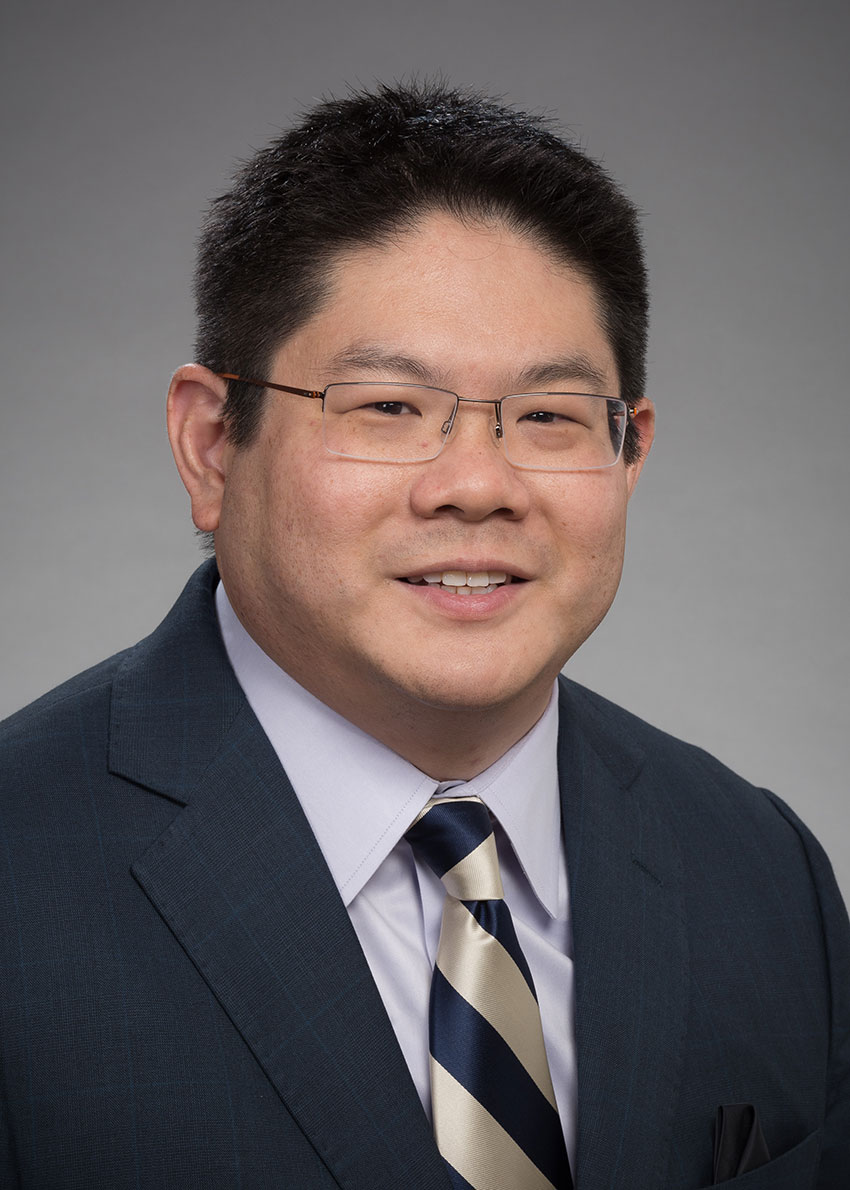
Aaron M. Cheng, M.D.
Co-director of Cardiothoracic Intensive Care, UW Medicine
Associate Professor, UW Medicine – Surgery
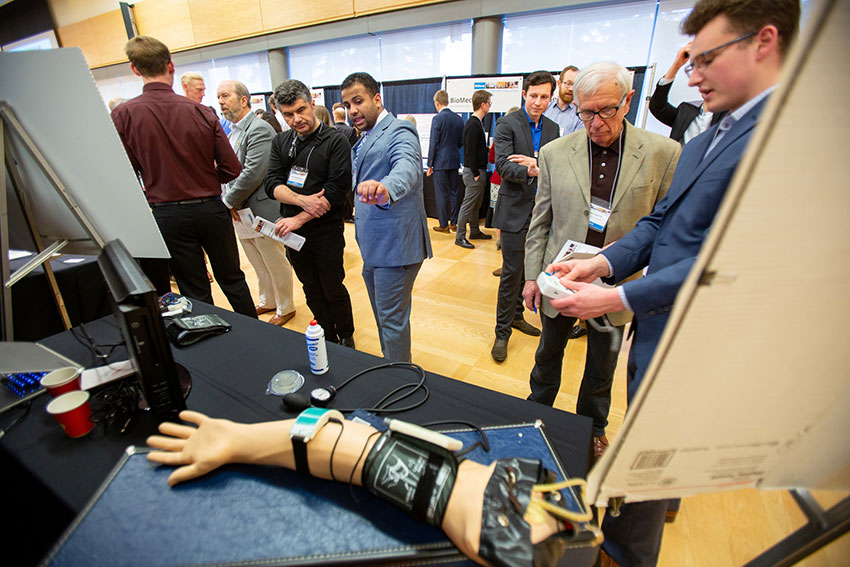
Cheng’s student team has developed DopCuff, a device to get accurate blood pressure readings from LVAD patients. Photo by Matt Hagen, UW Buerk Cetner for Entrepreneurship
Why did you get involved with EIH?
Since joining the UW, I’d been eager for an engineering-medicine collaboration. A colleague suggested EIH since it mirrored my interests. I had a device idea, and the College of Engineering had a great reputation.
What was your idea?
Some patients with heart failure have pumps called left-ventricular assist devices (LVADs) surgically implanted because treatment medications are no longer sufficient. However, because their hearts are weak, it’s difficult to read their blood pressure. This is especially urgent in critical care units. I’ve often wondered why there isn’t a device to do this more effectively.Tell us about working with your engineering team.
From the start, I was impressed by the engineering students’ organizational, problem-solving and technical skills. They visited the hospital and talked with nurses and patients, and their clinical questions were spot-on.
We’ve been developing a device to get accurate blood pressure readings from LVAD patients in the ICU. Eventually we’d like it to be used in outpatient settings, too.
The team has been prototyping the device this spring and entered it in the 2019 Hollomon Health Innovation Challenge and Dempsey Startup Competition, where they won a $2,500 health and wellness impact prize. They hope to get approval to study, test and then publish our findings in a journal.
What have you enjoyed the most about EIH?
Partnering with EIH has been one of the highlights of my time at UW. Working with the students has been great, and I’ve enjoyed being exposed to the business side of health innovation. I’ve learned — alongside the students — about creating pitches and proposals, technology transfer, and UW CoMotion’s services.
Any advice for other clinicians considering getting involved?
If you have an idea for a device, big or small, submit it. It’s well worth it. At first I thought this project might be too challenging for undergraduates, and I was surprised when it was accepted. My team has been outstanding. The students are fully capable and a delight to work with, and the engineering faculty offer great support, too.
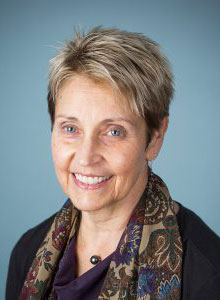
Joanne (Joie) Whitney, PhD, RN, CWCN, FAAN
Associate Dean for Research, UW Nursing
Research Scientist, Harborview Medical Center
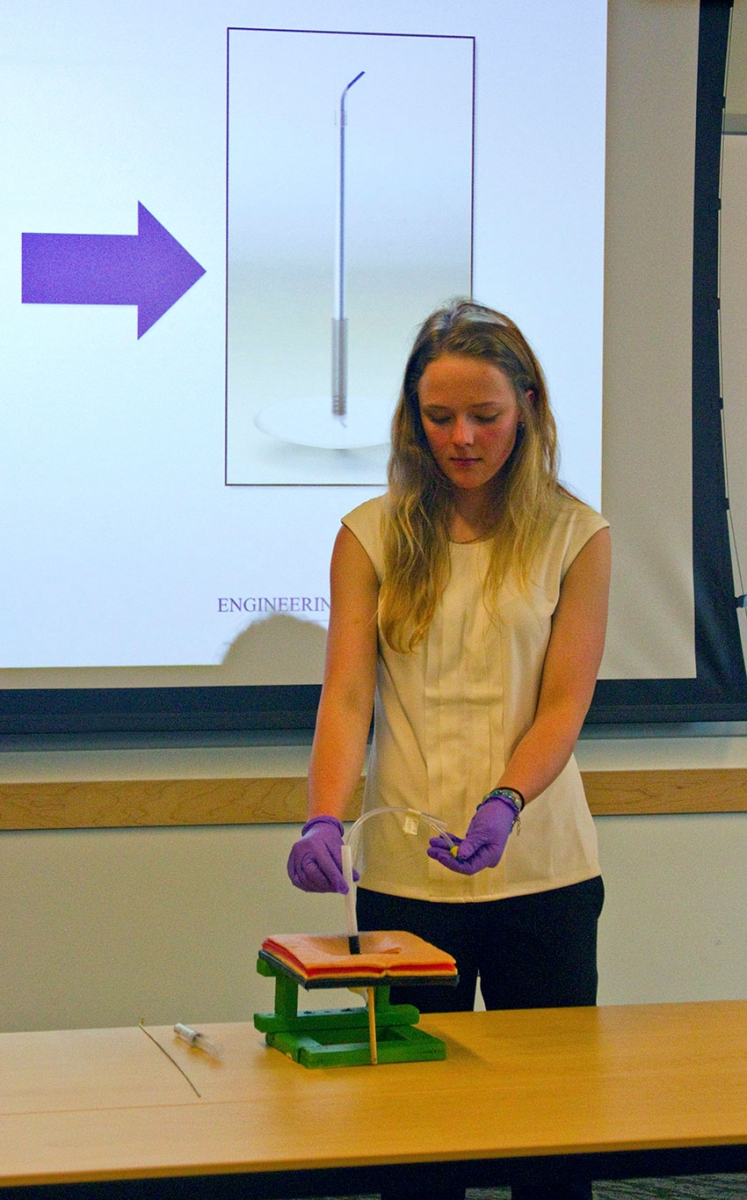
A student on Whitney's team demonstrates their device during the 2017 EIH symposium. Photo courtesy of EIH
Why did you submit a health care challenge to EIH?
My colleague Nancy Unger, a wound ostomy nurse practitioner at Harborview, and I had encountered a wicked, gnarly problem in our work; it seemed like EIH might offer us a framework through which to explore some solutions. I was also interested to discover what it’s like to work directly with engineers.
Tell us about your project.
An enteroatmospheric fistula (EAF) is a hole between the gastrointestinal tract and an unhealed wound and can develop as complications of abdominal operations. They leak large amounts of fluid into the wound, which is difficult to contain and hampers the healing process. Current means of managing the wounds surrounding EAF are time-consuming to apply and don’t last long. So, our goal was to develop an easy-to-apply device that would allow fluid to flow out of the body without irritating the wound.
What was working with your team like?
Our students were responsive, collaborative and unafraid to sink their teeth into a difficult problem. Together we met with Harborview surgeons, radiologists and patients. Our group came up with great ideas but also realized our project was extremely challenging and beyond the scope of the class. But that was ok – for us, experiencing the design process was an incredibly informative opportunity. And a good reminder that solutions don’t always come together immediately.
What did you enjoy most about EIH?
It gave me a window into the engineering world — to find out how engineers think about and approach problems. As a health care provider, you realize limitations and possibilities, but you don’t have the expertise to design and develop technical solutions. That’s where engineers are critical. EIH increased my understanding of human-centered health care design, and I’ve brought some of that into the health care training I am involved with for pre-doctoral students in the health sciences.
Any advice for others interested in getting involved?
If you have an idea, submit it and see where it leads. You’ll gain a lot of insight crossing between engineering and health, the time commitment was manageable, and you’ll come away knowing you provided a one-of-a-kind opportunity for students to work on real-world health issues. Plus, it’s a lot of fun.
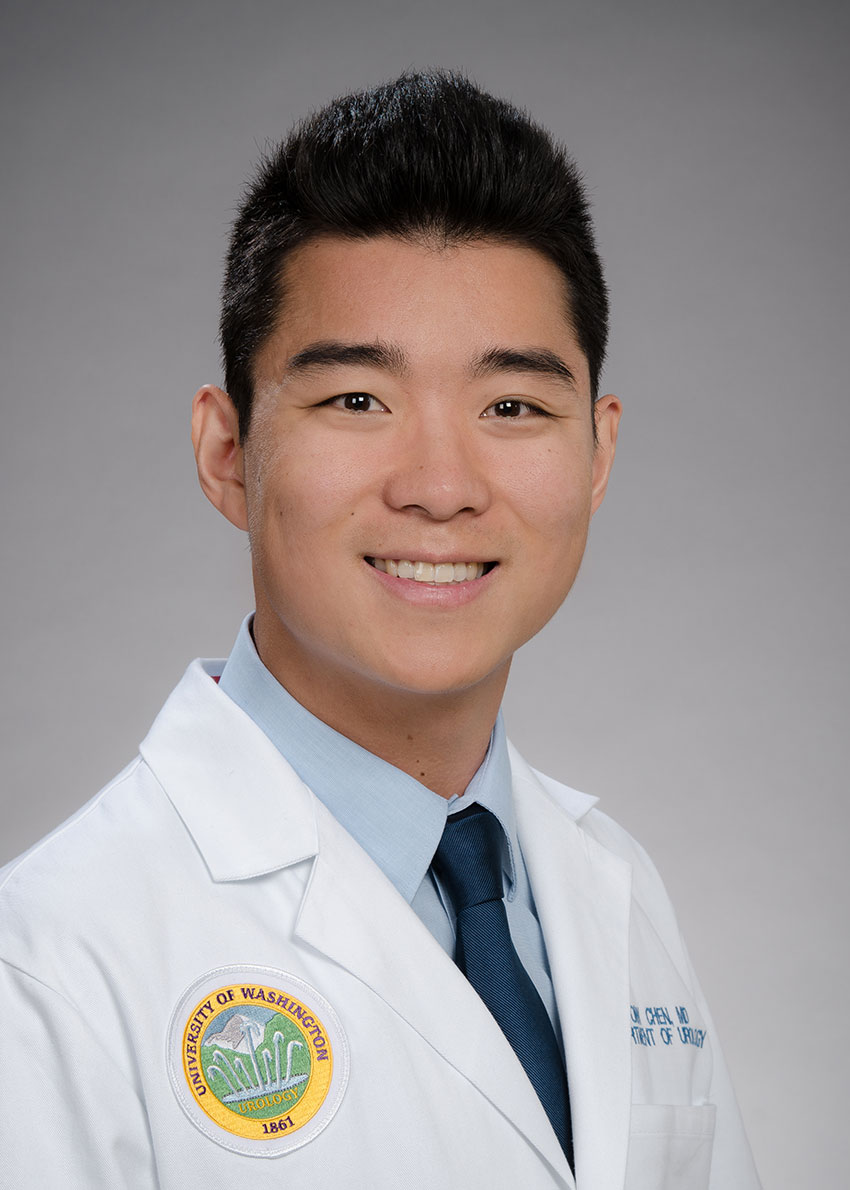
Tony Chen, M.D.
Urology Resident, UW Medicine
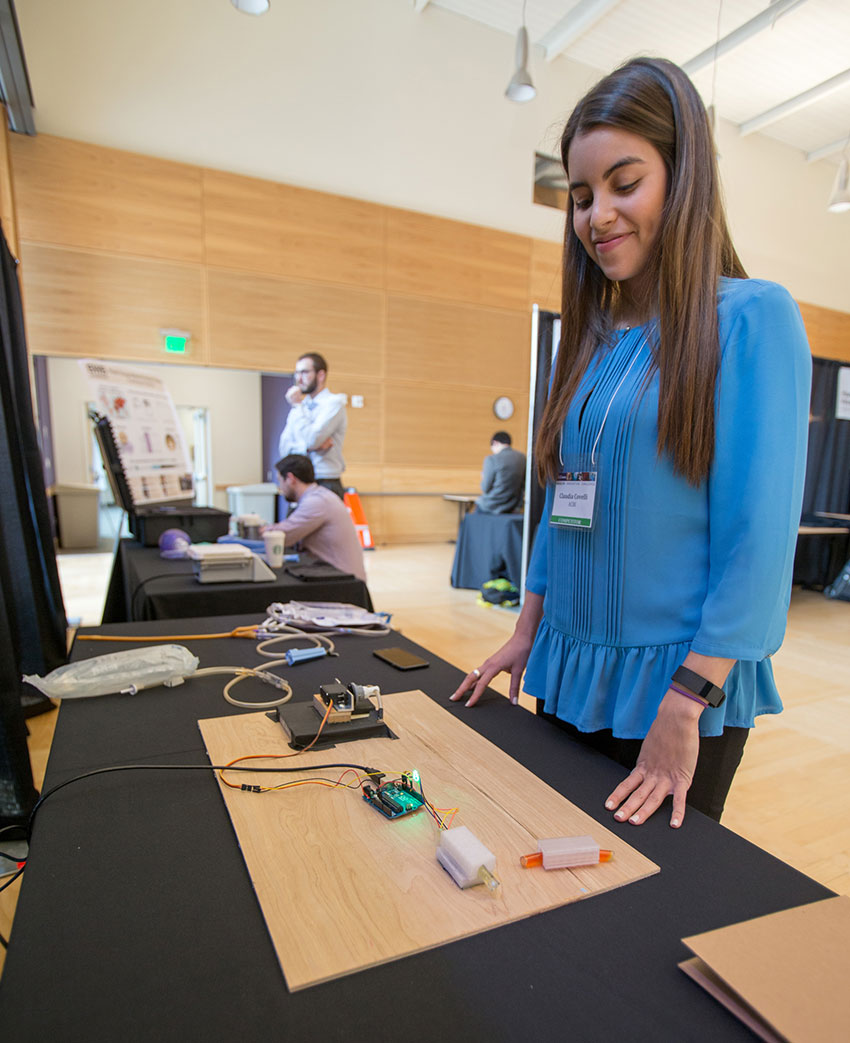
Chen’s student team took third in the 2017 Hollomon Health Innovation Challenge with their device, ACBI (automated continuous bladder irrigation). Photo by Matt Hagen, UW Buerk Center for Entrepreneurship.
What prompted you to get involved with EIH?
I found out about EIH from a fellow resident who’d had a good experience with the program. I’ve always kept mental notes of things I see around the hospital that could benefit from technological innovation, but I didn’t have the engineering knowhow myself. EIH was a chance to engage with people who did.
Tell us about the project your proposed.
It felt like a Shark Tank pitch! My project focused on continuous bladder irrigation (CBI), a manually burdensome medical process in which a nurse has to attentively maintain an apparatus that flushes saline through the bladder to wash out and prevent clotting. If a clot forms, it can cause urinary retention and lead to patient discomfort or additional morbidity. Since taking care of CBI requires high level of monitoring, I saw a need for a device that could automate this process by detecting blood in urine and automatically managing the saline flow accordingly.
What was working with your engineering team like?
It was a thrill to work with such talented and bright engineering students. They would do things like 3D print a device component or write code for a sensor with such ease. The team placed third in the 2017 Hollomon Health Innovation Challenge. Not only was it an affirmation of the potential of our project, but it was great to see the students recognized for their abilities.
After the class ended, your group continued to move the device toward commercialization. What’s that been like?
The most difficult thing for our group was learning everything outside of device development: regulatory requirements, understanding our market, how to file a patent, how to pitch to potential investors. None of us had encountered these topics in our engineering or medical training; luckily, EIH and CoMotion had plenty of resources to help. I’m excited to report that we just finished a clinical pilot study and are going through the patent filing process.
What’s the best part about partnering with EIH?
EIH opened my eyes to what engineers and clinicians have to offer each other and just how different our problem-solving paradigms can be. There’d be times when I’d say, “Just have the sensor do this – easy.” And the students would say, “What you just asked would be someone’s master’s thesis!” Or the students would share a new design and my response would be, “Patients will never go for that” or “That would never fly in the hospital.” When you put the two disciplines together though, you can really make strides towards meaningful innovations.
Got a clinical challenge? Learn how to submit it to EIH. Submissions for the 2019-20 academic year will be accepted through August 1.
Originally published May 28, 2019